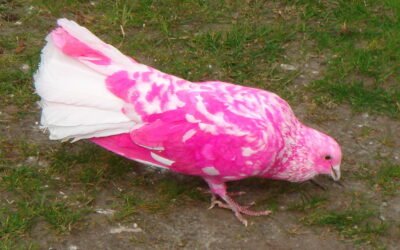Isro Chandrayaan-3 mission inspired this Ganesh Chaturthi pandal in Chennai

ISRO’s Lunar Mission Influence: A Unique Ganesh Chaturthi Pandal in Chennai
Table of Contents
- Begin with a captivating hook to grab the reader’s attention.
- Introduce the topic of your blog post: the unique Ganesh Chaturthi pandal in Chennai inspired by ISRO’s Chandrayaan-3 mission.
II. The Significance of Ganesh Chaturthi
- Explain the cultural and religious significance of Ganesh Chaturthi in India.
- Discuss how it’s celebrated and why it’s such an important festival.
III. ISRO’s Chandrayaan-3 Mission
- Offer an overview of ISRO’s Chandrayaan-3 mission, including its goals and objectives.
- Highlight the importance of Chandrayaan-3 in India’s space exploration efforts.
IV. The Inspiration Behind the Pandal
- Describe how the idea to incorporate Chandrayaan-3 into the Ganesh Chaturthi pandal came about.
- Discuss the individuals or groups responsible for the concept.
V. The Unique Features of the Pandal
- Detail the design and elements of the pandal that are inspired by Chandrayaan-3.
- Include photographs or illustrations if available to visually showcase the pandal’s uniqueness.
VI. Artistry and Craftsmanship
- Explore the artistic and craftsmanship aspects of creating the pandal.
- Highlight the skills and efforts put into bringing the lunar mission theme to life.

VII. Community Involvement
- Discuss how the local community in Chennai participated in the creation and celebration of the pandal.
- Share any heartwarming stories or anecdotes related to community involvement.
VIII. Visitors’ Reactions and Feedback
- Include quotes or testimonials from visitors who experienced the unique pandal.
- Share their thoughts and reactions to the fusion of science and tradition.
IX. Promoting Science and Culture
- Reflect on how such initiatives promote an appreciation for both science and cultural traditions.
- Discuss the broader impact of combining science and culture in public celebrations.
X. Conclusion
- Summarize the key points discussed in the blog post.
- Reiterate the significance of the Ganesh Chaturthi pandal inspired by Chandrayaan-3.
- Encourage readers to appreciate the fusion of science and culture in unique celebrations like this.
XI. Call to Action
- Encourage readers to visit the pandal if it’s still available for viewing.
- Invite them to share their own experiences or thoughts on the topic in the comments section.
XII. Additional Resources
- Provide links to relevant articles, websites, or resources for readers who want to learn more about Ganesh Chaturthi or Chandrayaan-3.

- Engaging the Reader: At the beginning of a blog post, you want to ensure that the reader doesn’t lose interest or click away from your content. With so much information available online, readers often make quick decisions about whether to stay on a page or move on. A captivating hook is your opportunity to make a strong first impression and convince the reader that your blog post is worth their time.
- Various Types of Hooks:
- Anecdotal Hook: Start with a short, relevant story or anecdote that relates to your blog post’s topic. This can create an immediate connection between the reader and the content.
- Statistical Hook: Begin with a surprising or intriguing statistic or fact related to your subject matter. This can pique the reader’s curiosity.
- Question Hook: Pose a thought-provoking question that the reader may want to find the answer to by reading further.
- Quotation Hook: Use a relevant and impactful quote from a famous person or a notable source that sets the tone for your blog post.
- Contrast Hook: Highlight a stark contrast or unexpected comparison related to your topic. This can create intrigue and curiosity.
- Rhetorical Hook: Start with a rhetorical question that encourages readers to contemplate the topic.
- Relevance to the Topic: While the hook should be attention-grabbing, it should also be directly related to the main topic of your blog post. This ensures that readers understand the connection and are motivated to explore the content further.
- Setting the Tone: The hook often sets the tone for the entire blog post. Depending on the style and tone you want to convey (informative, humorous, serious, etc.), the hook can help establish that tone right from the beginning.
- Creating Suspense: Sometimes, a good hook can introduce an element of suspense or curiosity. Readers may want to know what happens next or how a particular situation unfolds, encouraging them to read on for answers.
1. Identify the Main Subject: The main subject of your blog post is the “unique Ganesh Chaturthi pandal in Chennai.” This sets the stage for your readers and tells them that the post will primarily focus on this specific pandal.
2. Describe the Event: Ganesh Chaturthi is a Hindu festival that celebrates the birth of Lord Ganesha, the elephant-headed god of wisdom and prosperity. In this section, you should briefly explain what Ganesh Chaturthi is, when it is celebrated, and its cultural and religious significance in India.
3. Highlight the Location: Mention that this particular Ganesh Chaturthi pandal is located in Chennai, which is a major city in the Indian state of Tamil Nadu. This geographical context helps readers place the event.
4. Introduce the Unique Aspect: The unique aspect that sets this pandal apart is its inspiration from “ISRO’s Chandrayaan-3 mission.” You should explain that the pandal’s design, theme, or decorations draw inspiration from India’s space mission, Chandrayaan-3.
5. Provide a Teaser: While you don’t want to reveal all the details in the introduction, it’s good to give readers a teaser or a glimpse of what makes this pandal unique. You can mention that you’ll be diving deeper into the design, inspiration, and significance of this fusion between a religious festival and a scientific endeavor.
6. Engage the Reader: Your introduction should engage the reader’s curiosity and interest. You want them to feel intrigued and motivated to continue reading to learn more about this fascinating combination of tradition and science.
7. Set the Tone: The introduction can also set the tone for your blog post. Depending on the style you want to convey (informative, celebratory, or analytical), you can subtly hint at the tone you’ll be using throughout the post.
8. Keep it Concise: While providing all the necessary information, aim to keep the introduction concise and to the point. It should be a brief overview that captures the essence of the blog post without overwhelming the reader with too much detail.











